Hah Taew Sak Yant Tattoo With Lotus
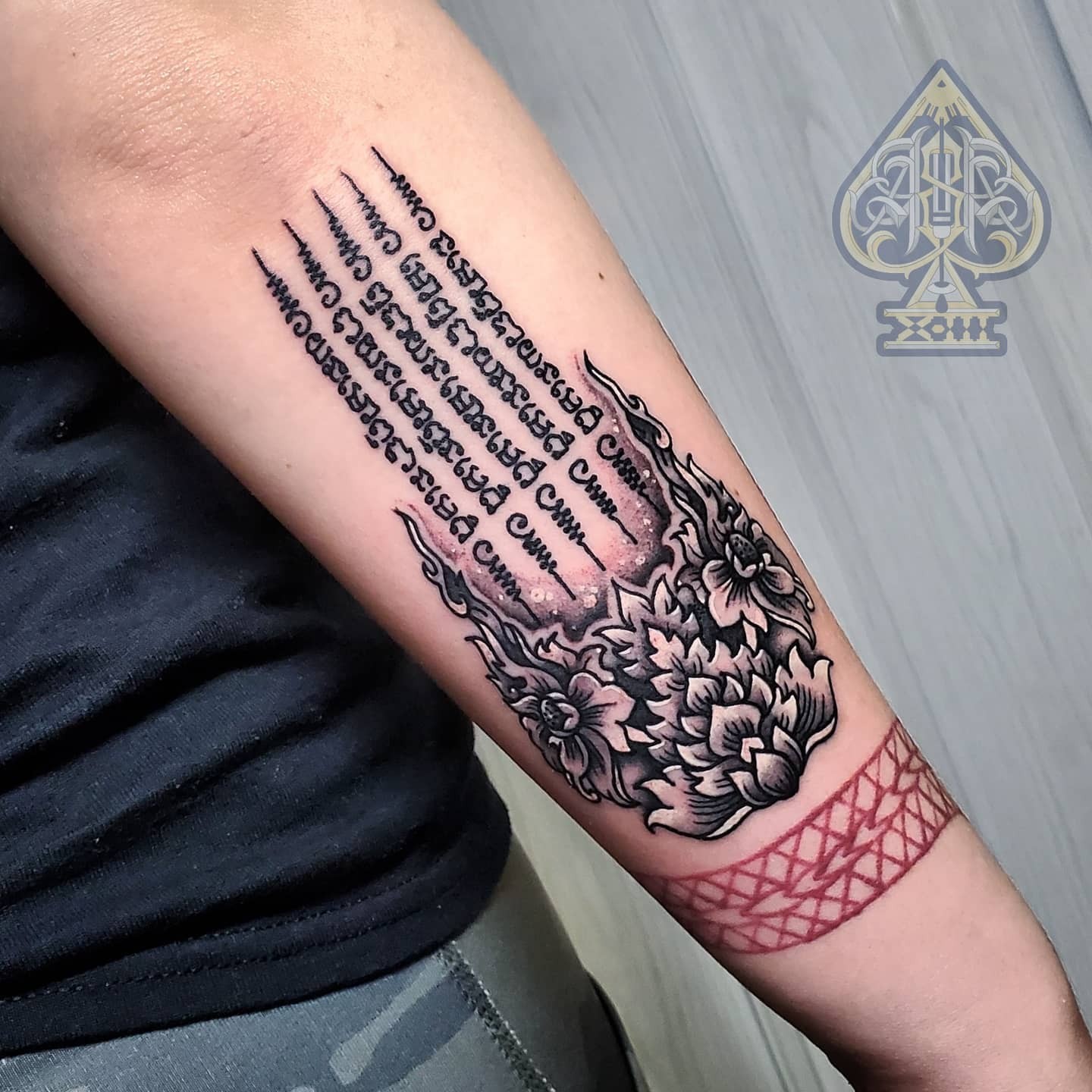
In Thailand, Buddhist temples and monasteries have a unique tradition of tattooing that dates back centuries. Unlike modern tattoo parlors, monks and ajarns use traditional tools like bamboo needles or steel rods with tips, known as khem sak. For a truly spiritual experience, you can visit any monastery and ask to be inked by a master ajarn or monk. This ancient art is called sak yant, and it involves a sacred ceremony where the design and location on your body are chosen specifically for you.
One of the most popular designs is the Hah Taew, also known as the Five-line sak yant. This intricate design features lotuses and has been worn by Buddhist monks for over 700 years. According to legend, it was first discovered by a monk from Chiang Mai. The five lines of this tattoo are believed to offer protection against various forms of negativity, including unjust punishment, bad fortune, curses, and even boosting the wearer’s energy levels.
Interestingly, even Hollywood star Angelina Jolie has been adorned with this design on her back.
Paed Tidt Sak Yant Tattoo
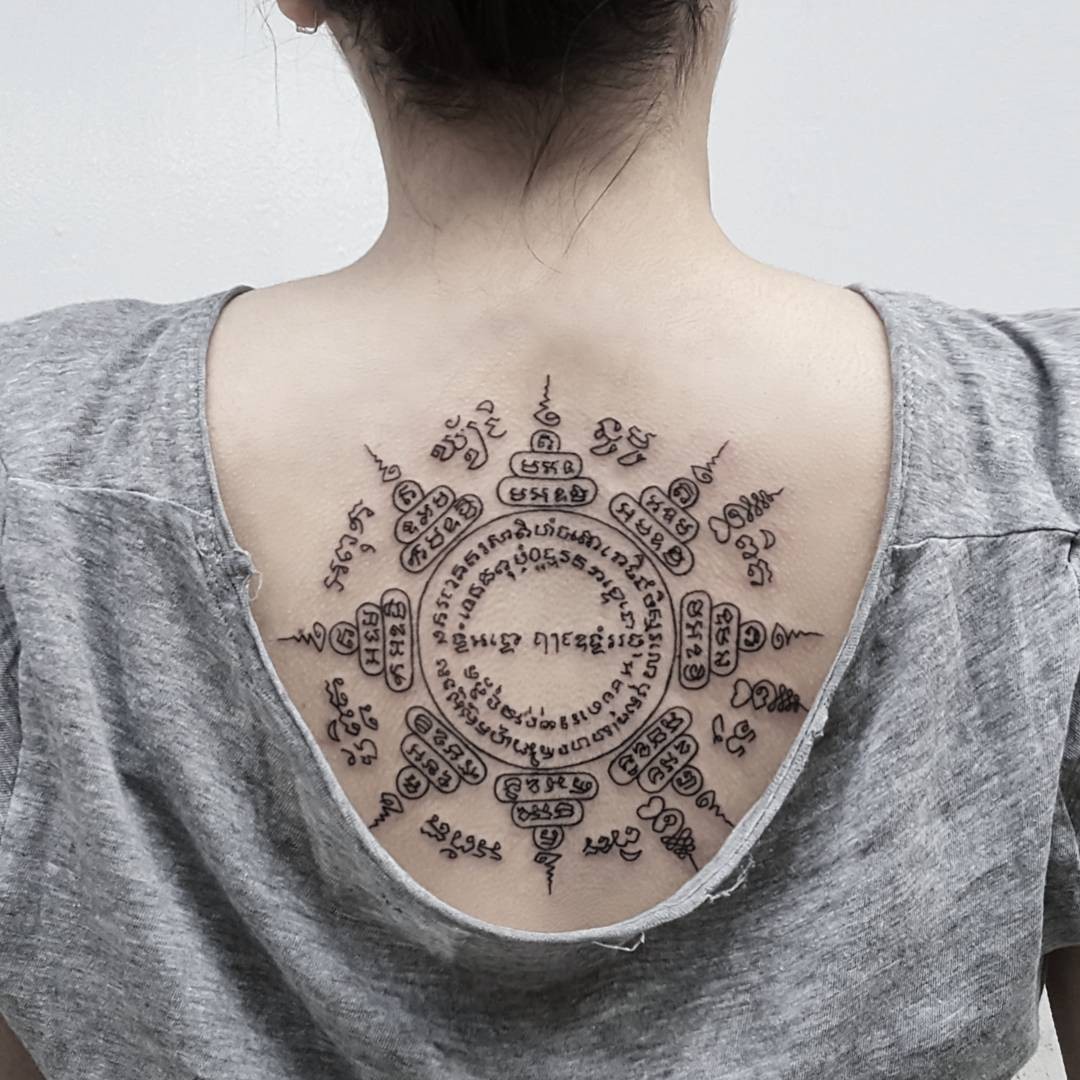
While the process of getting a sak yant tattoo may be painful, many people find it to be a worthwhile experience. The Paed Tidt design is a complex circular pattern that incorporates eight yant Ongk Pra and Unalome designs. The yant Ongk Pra itself is comprised of three oval shapes and is believed to represent Lord Buddha. These eight designs also symbolize the eight directions of the universe, making this tattoo a powerful and meaningful one.
According to tradition, the sak yant design has magical properties that protect travelers from negative energies and obstacles. Each of the eight yant Ongk Pra designs carries its own unique meaning and significance. For those considering getting this intricate tattoo, it’s recommended to seek out an experienced and reputable tattoo artist rather than a random shop. In Thailand, monasteries are also known for offering a spiritual experience in conjunction with the tattooing process.
Unalome Sak Yant Tattoo Design
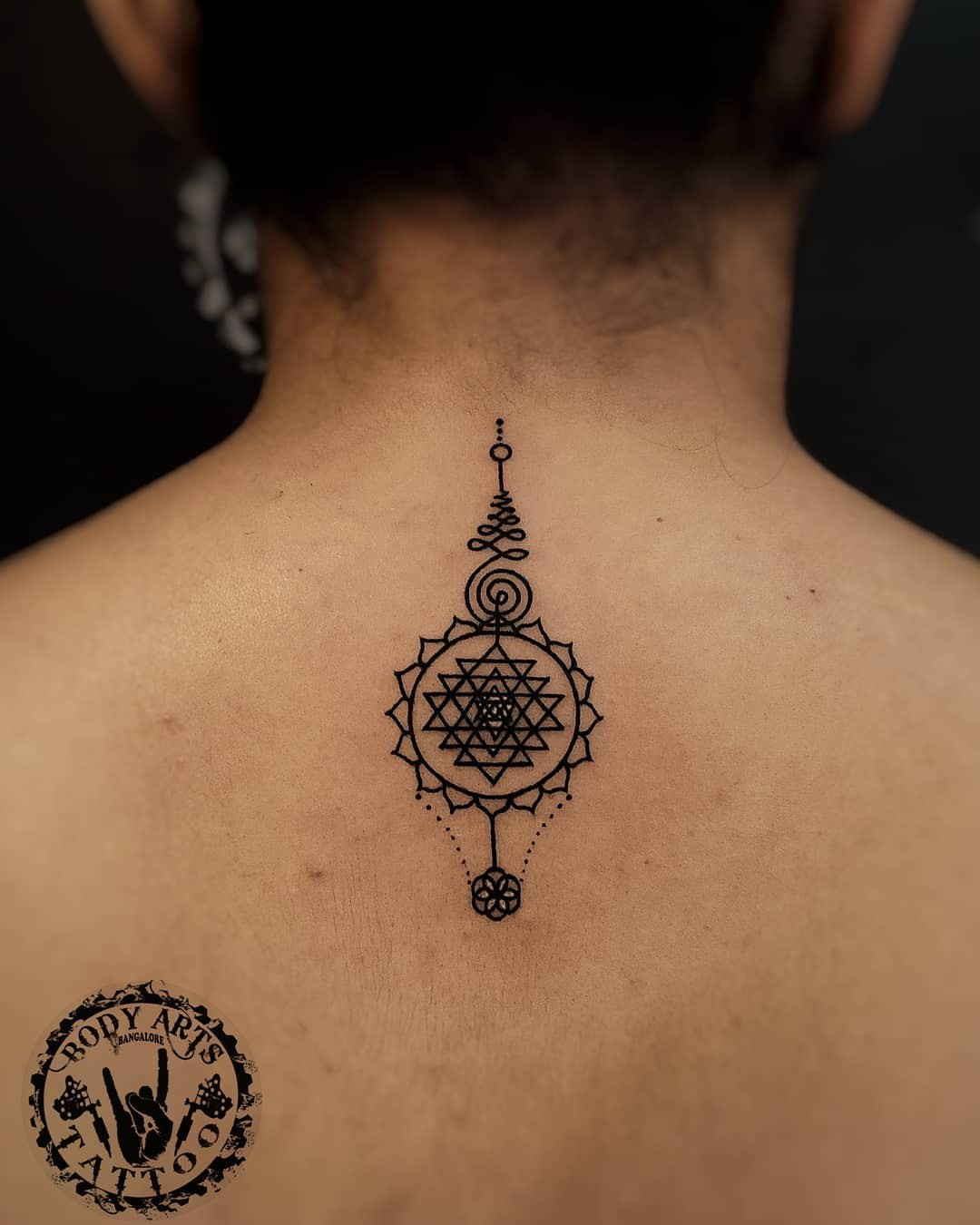
The Unalome design is a straightforward yet profoundly symbolic representation of the Buddhist philosophy. The swirling coil at its base signifies the moment of birth, while the twisted upper section represents the challenges and complexities one encounters throughout life. The upward-pointing straight line conveys the idea that by overcoming these difficulties, an individual can ultimately achieve freedom and enlightenment.
Additionally, the three vertical dots at the top symbolize the trifecta of human aspiration: freedom, goal, and enlightenment. This design is commonly found in sak yant tattoos, but it’s also possible to get a simplified Unalome tattoo without additional elements.
Khmer Sak Yant Tattoo Design
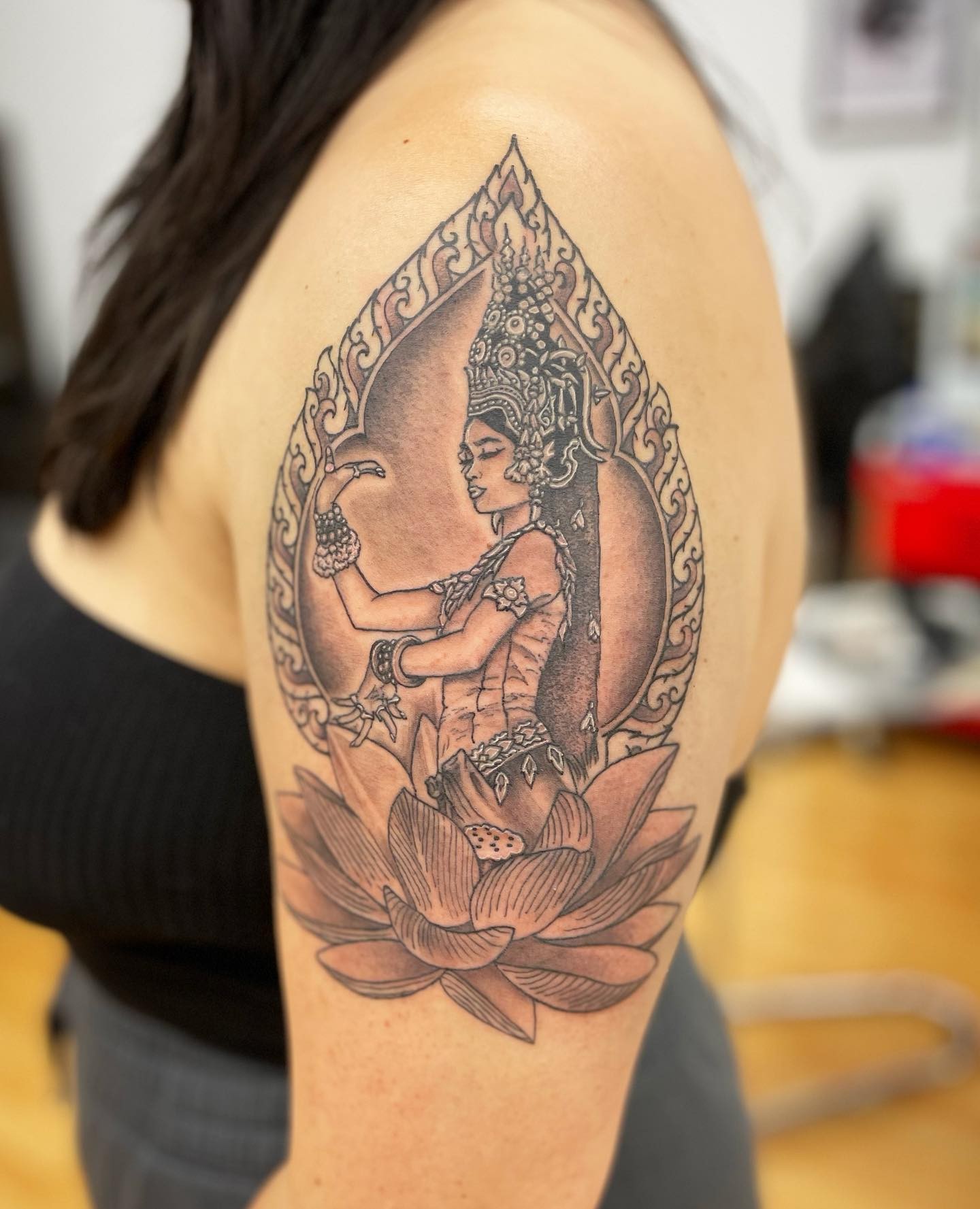
Gao Yord Sak Yant Tattoo Design
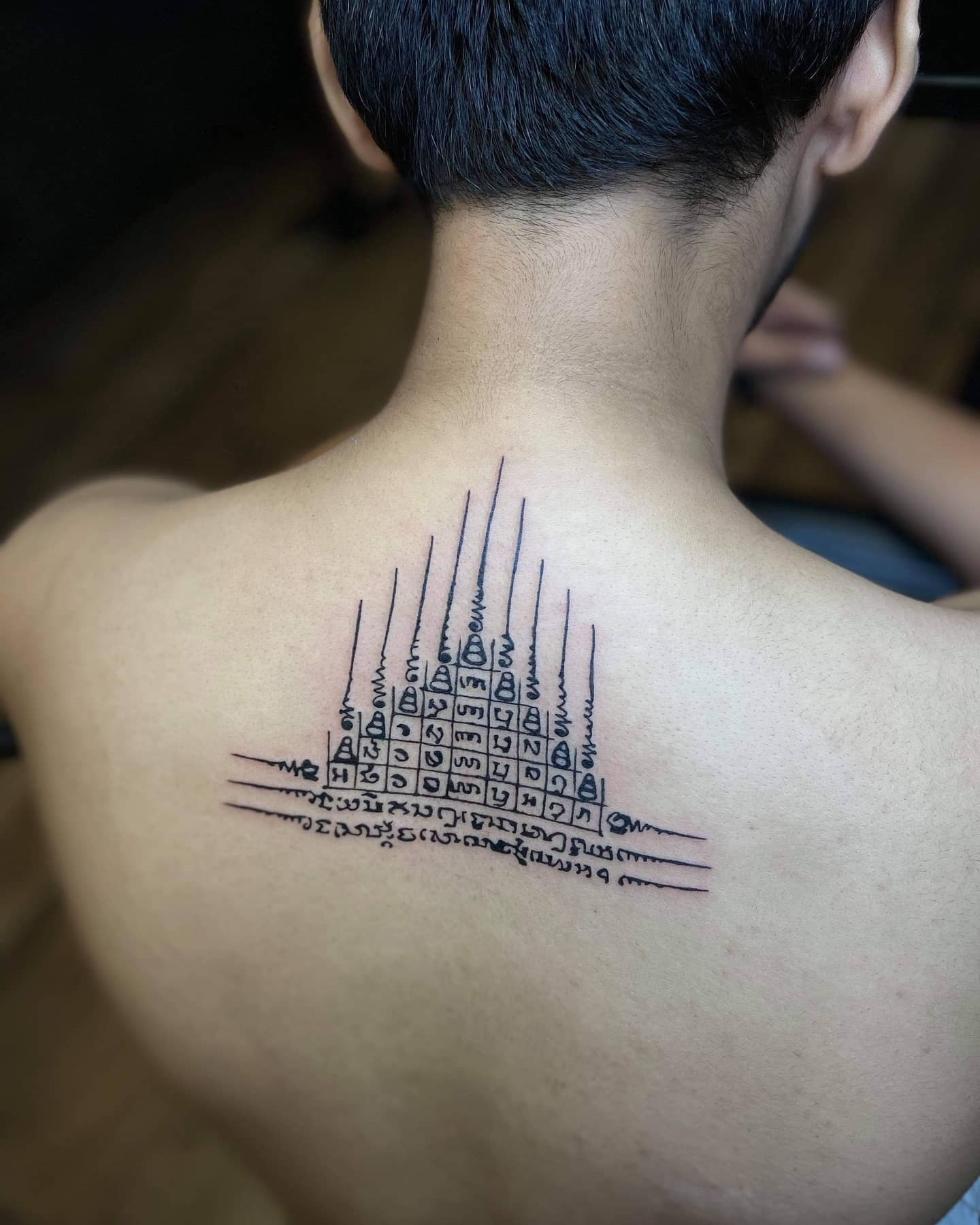
The Sak Yant design that wields powerful protection against black magic and curses is a highly sought-after choice for those seeking safeguarding from harm. The nine peaks of this design are steeped in Buddhist symbolism, each representing one of Lord Buddha’s attributes. In Thai culture, this tattoo is revered as a shield against danger, bestowing upon the wearer an aura of invincibility. Each peak possesses its unique name and inherent energy.
Those donning this design are often regarded with profound respect and affection by others. Its versatility allows for a perfect fit on either the back or chest.
Soy Sung Warn Sak Yant Tattoo Design
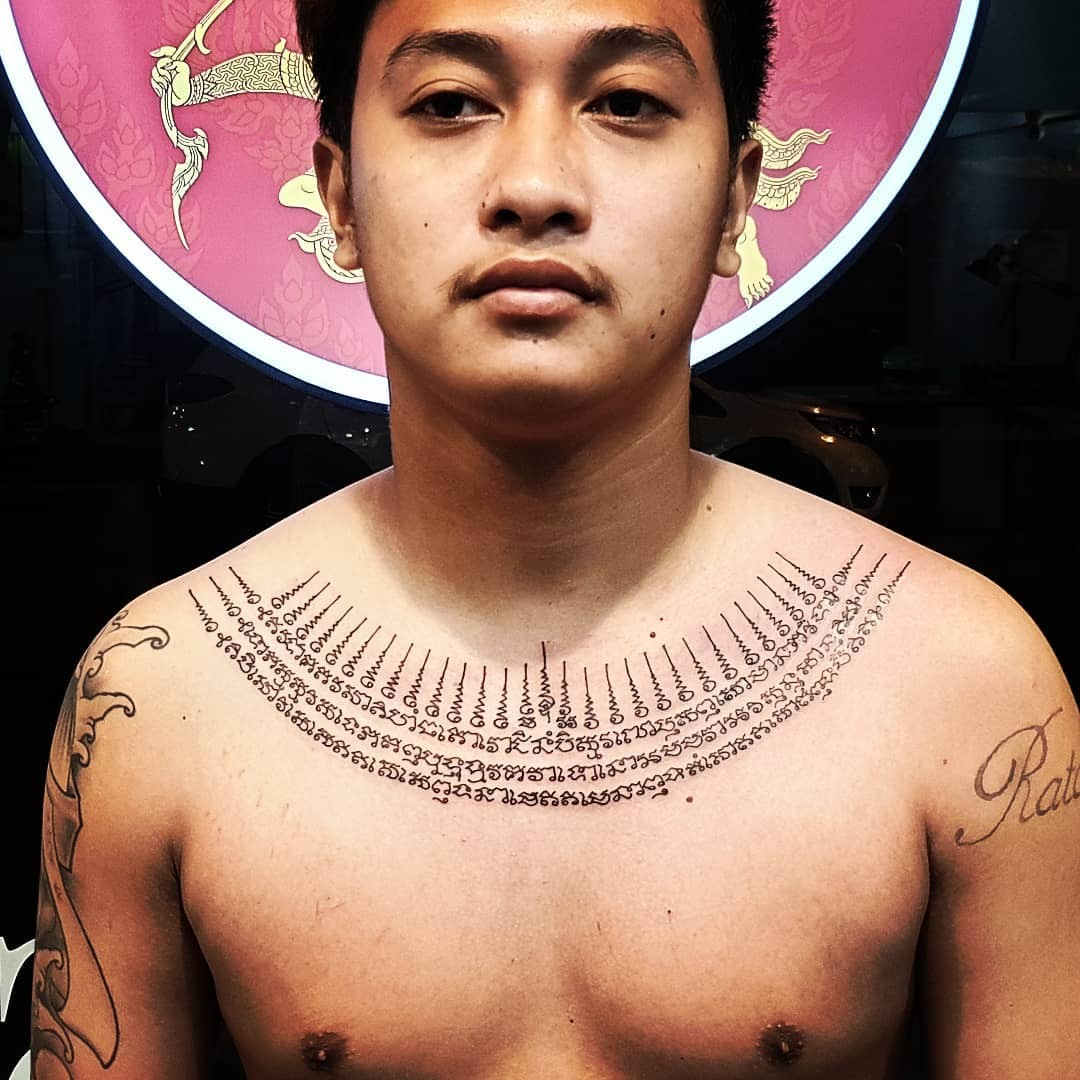
The Soy Sung Warn or necklace sak yant tattoo holds a special significance in Thai culture, particularly among soldiers and Muay Thai fighters. The design is inspired by the ancient shields worn by warriors, imbuing it with mystical properties. According to tradition, this tattoo offers protection from harm, including weapons, and is believed to safeguard its wearer against fatal accidents. Unconventionally, this beautiful sak yant design can be worn by both men and women.
While some Buddhist monks still adhere to the traditional taboo of not adorning women with sacred tattoos, there are many places where women can now obtain a sak yant tattoo, breaking down cultural barriers.
The Twin Tiger Sak Yant Tattoo Design
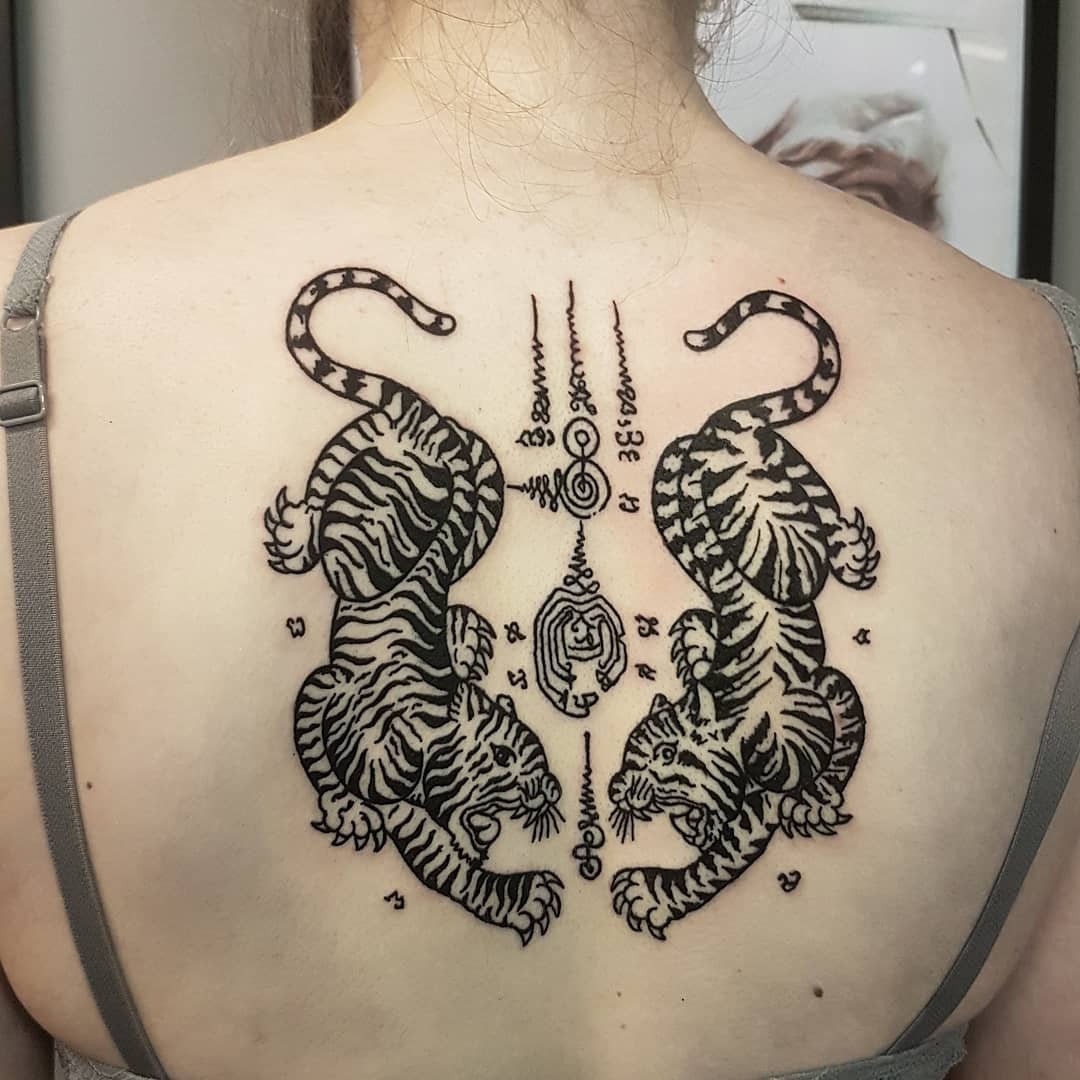
Among the various Sak Yant tattoos, the Twin Tiger design stands out for its unique significance. Typically inked by Muay Thai Fighters and individuals in high-risk professions, this symbol represents power, strength, fearlessness, and protection – much like the majestic tigers that inspire it. What’s more, these mythical creatures are believed to possess magical properties that can aid entrepreneurs in their pursuits, imbuing them with the courage to take on new ventures.
Whether you wear this striking design on your back, chest, or abdomen, be prepared for admiring glances from those who lay eyes on it.
The Phra Ra Hu Ohm Chan Tattoo Design
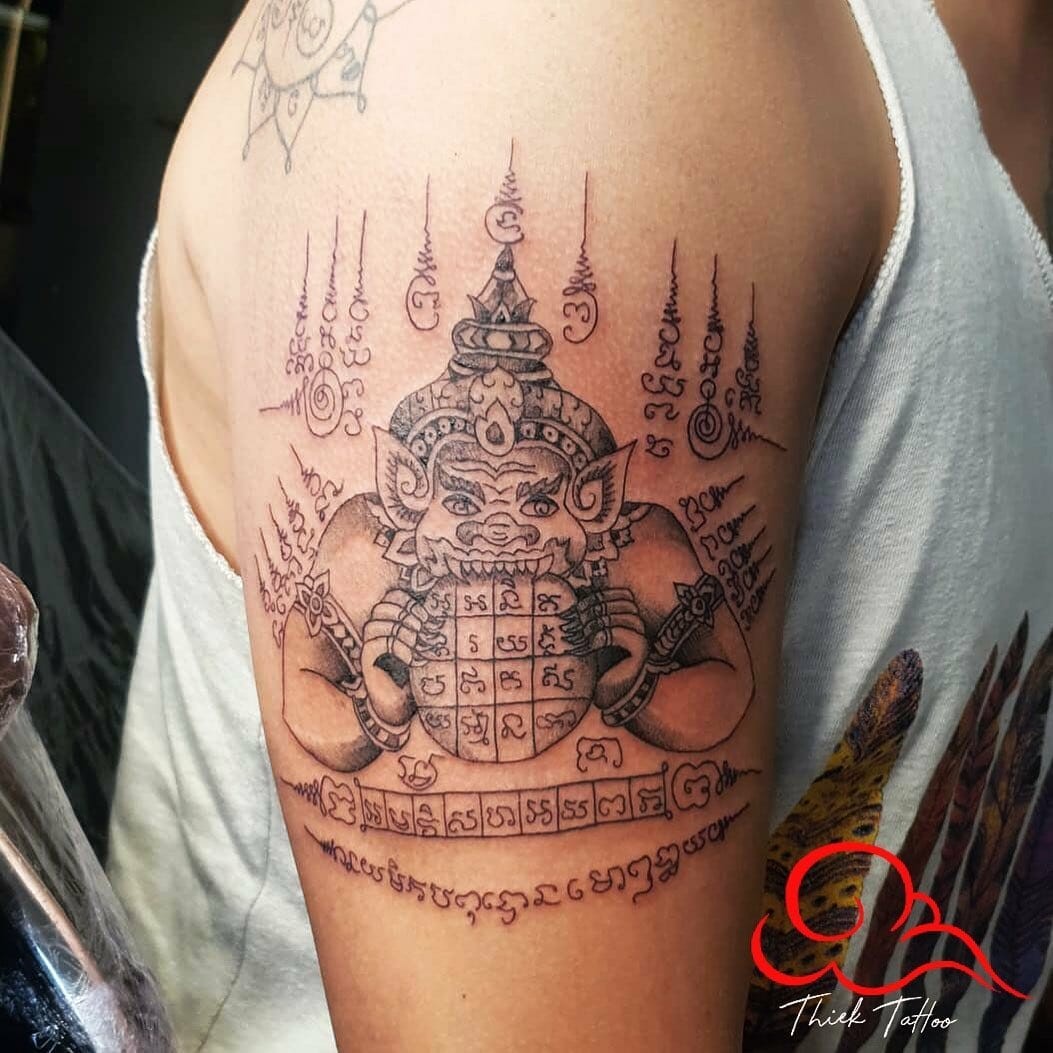
Thai culture’s intricate connection with Hinduism has led to the reverence of Rahu, the Lord of Darkness, as embodied in the Phra Ra hu Ohm Chand, also known as The Moon Eater. In Thai tradition, Rahu is often perceived as a harbinger of misfortune and peril, yet paradoxically, this very symbol is frequently incorporated into sak yant tattoos to ward off negative energies and calamities.
This ancient design is sought after by many for its protective properties, allowing individuals to safeguard themselves against harm. A popular placement for this tattoo is on the back or chest, where it can serve as a constant reminder of one’s desire for good fortune.
Phra Pikanet Sak Yant Tattoo Design
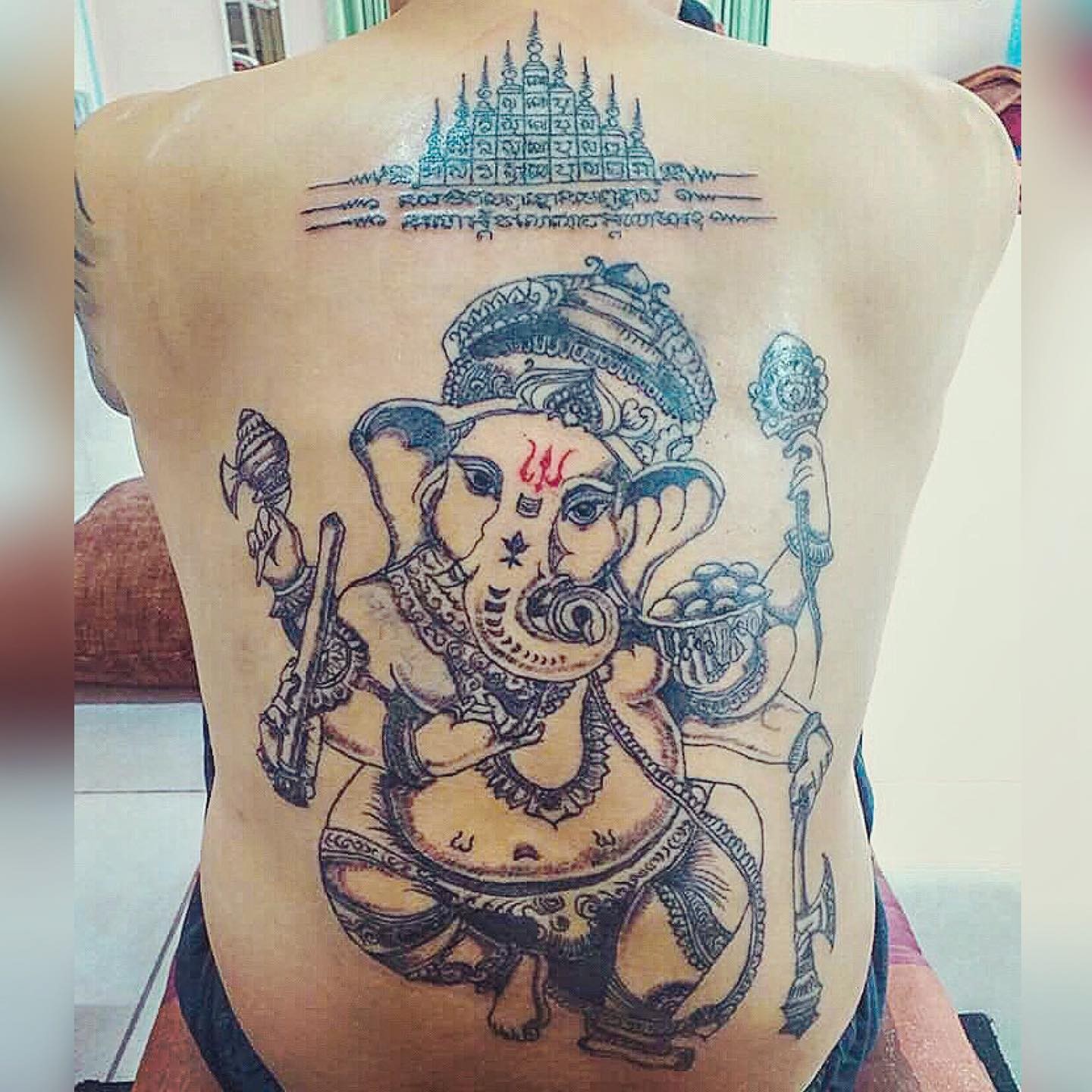
One of the most sought-after sak yant tattoo designs is inspired by Ganesh, the Hindu deity revered for his roles in governing knowledge, prosperity, and energy. In Thai Buddhism, Ganesh is referred to as Phra Pinajet. This design is particularly favored by individuals seeking to boost their business endeavors and overall success. Additionally, this sak yant tattoo is believed to serve as a guardian of wealth and valuable possessions.
As a result, it’s often positioned on the shoulder, back, or chest, allowing for maximum visibility and protection.
The Dato Ruen Sak Yant Tattoo Design
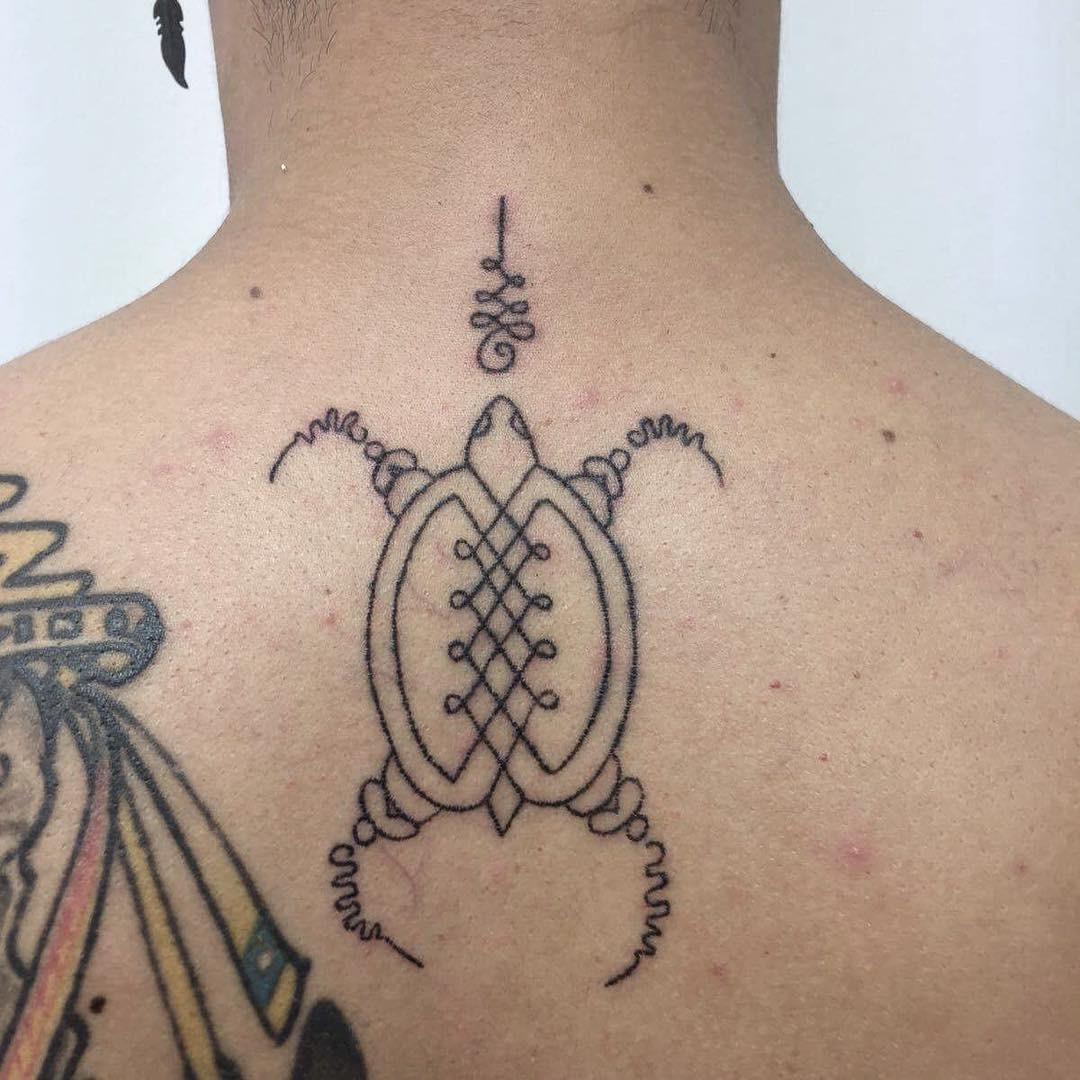
Turtles hold a special significance in many cultures, representing the intersection of water, earth, and fertility. Their ability to protect themselves has also made them a symbol of protection and power. According to legend, Buddha himself was once reincarnated as a turtle to shield humanity from harm.
In Thai culture, the term ‘Dato Ruen’ literally translates to ‘turtle house’, with the story going that the turtle’s imprisonment grew so large it became a dwelling place.
The sacred tattoo can be worn on various parts of the body, including the neck, forearm, shoulder, or chest.
The terms ‘sak’ and ‘yant’ are often used together to describe these intricate designs, which typically feature Khmer, Pali, or Sanskrit words. Each design has a profound meaning attached to it, making the tattooing process an art form in itself.
When it comes to cost, sak yant tattoos can vary greatly, ranging from $120 to $550 depending on size and placement.
Even different Ajarns may charge varying amounts for their work. For those who prioritize design over meaning, there’s always the option to visit a tattoo shop and commission a custom piece.
Not convinced yet? Don’t worry, we’ve got more ideas in store. Here are some mind-blowing sak yant designs to consider:
The Magnificent Hanuman (Monkey King) design
Gorgeous dragon design
The Suea Hiaw Lang design
Dok Mai design
Pra Jao Ha Pra Ong design
What is a sak yant tattoo?
For centuries, the art of Sak Yant tattooing has been deeply rooted in Southeast Asian culture, particularly in Thailand. These sacred tattoos, often referred to as ‘magical’ or ‘spiritual’, are imbued with mystical properties that offer protection and good fortune to those who wear them. Historically, Buddhist monks and shamans would bestow these blessings upon individuals by inscribing intricate designs onto the skin using a metal rod tipped with a needle.
Today, while traditional methods remain largely unchanged, Sak Yant tattoos continue to be applied in much the same way – typically by experienced spiritual practitioners. However, some modern tattoo artists have also started to offer their own interpretations of these revered designs.
What are the rules for getting a sak yant tattoo?
When contemplating a Sak Yant tattoo, it’s crucial to acknowledge the profound cultural and spiritual significance behind the practice. The tattoos themselves serve as a form of protection, and their acquisition should be approached with reverence rather than treated as a mere fashion statement.
To ensure that your experience is authentic and meaningful, several guidelines must be followed: first and foremost, you must entrust the tattooing process to an experienced and revered spiritual practitioner. Additionally, it’s customary to present an offering of food or money in respect for the monk or practitioner who will bestow the tattoo upon you. Following the completion of the tattoo, three incantations are traditionally uttered to consecrate its effectiveness.
Furthermore, you must take care to safeguard your Sak Yant from direct sunlight, as this is believed to diminish its protective properties. It’s essential to treat your tattoo with respect and maintain a reverent attitude towards it in order for it to remain potent. Lastly, should you ever decide to remove a Sak Yant tattoo, you must do so in accordance with traditional rituals, demonstrating the utmost respect for the sacred practice that has given you this unique symbol of protection.
How long does it take to get a sak yant tattoo?
The time required to get a Sak Yant tattoo is heavily influenced by the design’s size and intricacy. While smaller tattoos can be completed in as little as 15 minutes, larger and more complex designs may necessitate several hours or even longer sessions. It’s also crucial to consider the preparation time needed before your session, including having an offering ready for the practitioner.
